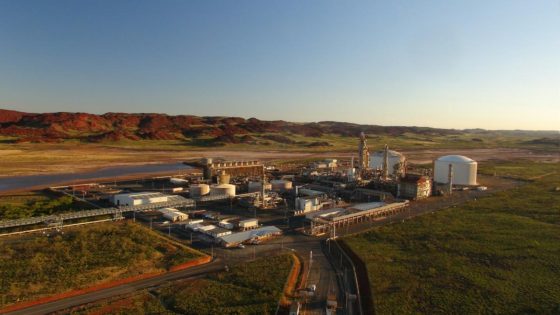High local gas prices risk “deindustrialisation” of WA, a manufacturing executive has told a State parliamentary inquiry.
The economics and industry committee is still scrutinising the rules around domestic gas supply, with a huge shortfall looming within a decade.
The magnifying glass has been on the contribution of LNG exporters, while users and producers are also fighting over access to international markets for Perth Basin companies.
Yara senior energy sourcing manager Jai Coppen said an increase in the price the fertiliser company pays for gas could lead to reduced production.
Mr Coppen said the local gas price had lifted close to the LNG netback — effectively the export price adjusted for liquefaction and transport costs.
“Domestic users have swallowed that, and it has not really been public because of the bilateral, opaque nature of the market here,” he said.
Mr Coppen said the Australian Energy Market Operator had predicted the State would lose industry at a gas price of $9.50 a gigajoule.
“That is absolutely true,” he said. “We compete internationally with our fertiliser prices and with our ammonia prices, which are right now depressed due to global issues.
“An increase in the gas price as our contracts start to roll off will only result in potentially the reduction of production on our site.”
He also warned that a single gas facility outage would force the manufacturing industry to turn down plants.
Over the 2022-23 summer, problems at Santos’ John Brookes and Chevron’s Wheatstone facilities led to a major crunch in gas supply.
Alcoa and Yara both slashed output at their manufacturing plants.
“We are one facility trip away,” Mr Coppen told the inquiry. “The market is so finely balanced.”
Domgas Alliance spokesman Richard Harris said the local gas market would be tight in the year ahead, knocking back recent claims the pressure had eased.
The planned mothballing of Alcoa’s Kwinana alumina refinery and big troubles in the nickel industry had been considered likely to reduce demand.
“I still think it’s going to be very tight,” Mr Harris said.
“I don’t think that’s changed very much at all. There is unmet demand still out there and it’s probably been under-reported to date.”
But Mr Harris also said the State’s power grid would likely not be impacted by a shortage.
The effect would be most keenly felt by value-adding industry, he said.
At a second hearing, former energy minister Bill Johnston — acting as committee chair — put the oil and gas lobby under pressure about the speed of offshore project development.
He asked whether the Federal Government needed to crack down on retention leases for offshore fields to encourage immediate investment.
Those rules allow companies to hold fields which are not economically viable so they can be developed at a later stage.
Mr Johnston said the State Government had written to the Commonwealth arguing five fields off WA should be knocked back from retention status and instead given five years to get into production.
“If you do not bring them into production, inevitably, somebody else can pick them up because they will be returned to the Crown,” he said.
“Would that be the fastest way to get them into production?”
Australian Energy Producers boss Samantha McCulloch said companies needed to prioritise investment in the most viable fields.
Ms McCulloch said the investment environment had been challenging for Australian oil and gas in the past 18 months.
The Federal Government’s “changing of the goal posts” had weighed on investors, she said.
Source Agencies



